In a recent well-publicized study of the best and worst states for driving, WalletHub said that Hawaii has nailed it and is dead last. They called it the “Worst State.” But is it true that Hawaii is really the worst? If you’ve driven in Hawaii recently, here’s your chance to see what it’s all about and if you choose, vent about issues driving here.
Among the problems cited by Wallet Hub were the average gas prices, still hovering around $5/gallon in the islands, tragic congestion, and road quality, among other things. What wasn’t covered in the survey were things like the percentage of confrontational drivers you’ll meet. Hawaii is ranked 39/50 as having among the nicest drivers by Forbes. How many times have you been able to merge into traffic, not get honked at, or are given a shaka sign of aloha? It happens here all the time.
Sure, gas prices are higher in Hawaii for a variety of reasons. Also, given the distance and expenses associated with selling anything in Hawaii, the islands will typically have the highest gas prices. At the other end of that scale sits Texas, where gas can be had for about one-half the price found in Hawaii.
What Wallethub missed.
If you compare the quality of driving in Hawaii and most other places, we’d say that Hawaii ranks more favorably than WalletHub suggested. If you want to take it to an extreme and perhaps even include the scenery, that moves Hawaii to the very top.
Then there are different studies. And, on the good side, Hawaii scored well in auto safety, which looked at accidents, tickets, seatbelts, and car theft. There Hawaii came in #6 in the nation. That study from Bankrate also showed different results than WalletHub, ranking Hawaii 12 out of the 50 states in terms of the best states for drivers. It also listed Hawaii as #3 in the safest driving category.
We have our gripes about Hawaii driving.
Some of the roads in Hawaii are just dismal, with upkeep virtually nonexistent. Think of the road to Kokee State Park on Kauai, for example. It is a complete embarrassment and is dangerous and unacceptable, presenting the obvious question of why it doesn’t get fixed.
Traffic isn’t good in Hawaii, either. Whether in Honolulu rush hour, which is up there among the worst, or Maui and, for example, the drive between Kahului and Kaanapali. Or on Kauai, the drive through the it-takes-forever Kapaa corridor.
Hawaii driving hints for visitors.
The resurgence of travel to Hawaii brought incredible traffic onto our roads, and the rate of serious accidents went up, according to the State DOT. This calls for patience and smart thinking. It’s always the right time to take extra care when driving on your Hawaii vacation. And now that’s even more true than ever.
Pay attention and respect all road rules, especially if you are driving in Hawaii for the first time. Be extra cautious at intersections. Avoid passing because you may not always see oncoming traffic on our curvy, two-lane roads paired with easily distracting roadway conditions. If someone does decide to pass you, be mindful of their actions and look for potential issues. This ties into number one below. Please slow down, enjoy your vacation, and get home safe so you can return again.
- Slow down, go with the flow, stay safe, and keep your vacation money in your pocket. Speeding is a significant problem and one of 3 major factors associated with accidents in Hawaii. If it helps you to keep speed in check, know the speed limit, and remember that speed detection by police is widespread, and tickets for violations of traffic laws are frequent and expensive. Visitors have commented to us about the huge fines they’ve incurred.
- You may be tired of hearing this, but don’t make U-Turns on Hawaii highways, become distracted by the beauty or stop suddenly for photo opportunities. On a personal note, visitors are still regularly making unsafe U-Turns. When a visitor car pulls off to the right, we anticipate that a sudden U-Turn may be coming. Often it is.
- Forget the horn. We use car horns to say hello to people and not to complain. Let people in; it’s our way, and we love it.
- Rain makes for limited visibility, ground fog, and slippery roads. Hydroplaning here’s a big problem, and fast rains can come from nowhere. With our weather far more unpredictable than on the mainland, you sometimes just need to pull over to be safe in major downpours.
- Watch for Hawaii weather, flood advisories, and potholes. NOAA weather is a good place to start for forecasts and advisories. Driving during flooding in Hawaii is something you don’t want to experience. Potholes in Hawaii can be virtually invisible and serious, and they can cause significant damage to your car. Be mindful.
- Avoid rush-hour traffic in Honolulu and on the neighbor islands between 6:00 AM to 8:30 AM and 3:00 PM to 6:00 PM. It’s always “mo betta” to spend your time sitting on the beach than in traffic.
- Plan your route in advance. Remember that driving between points on our island roads takes longer. And check Maps before starting. We can’t tell you how often we didn’t arrive at our destination as planned due to highway closures due to an accident or roadwork.
- Crossing the highway is dangerous if you’re not at a crosswalk. Also, motorists use caution and be watchful of pedestrians. Look ahead one city block, or a quarter-mile on rural roads, for potential problems.
- Road shoulders in Hawaii are often soft and deep and sometimes non-existent; avoid them whenever possible. That’s even more so during inclement weather. Avoid getting towed. You can’t imagine how many times we see visitors getting stuck. Jeff has also had to be towed away so that it can happen to anyone.
- Learn the meaning of “makai” (towards the ocean) and “mauka” (towards the mountain) when receiving directions. We often use landmarks and mileposts rather than street names or highway numbers to give directions between points. Especially outside Honolulu.
Hawaii Department of Transportation Dep. Director Ed Sniffen said he wants to “start talking about how we can save people’s lives by doing something as easy as following the law… Regarding speed; he added that “the faster the vehicle involved in a collision is traveling, the less likely it is that the person hit will survive. Nine out of 10 people hit by a car at 20 MPH will live — double the speed to 40 MPH, and only 1 out of 10 will survive.”
While visitors and rental cars are just one cause of problems driving in the Hawaiian Islands, there’s no doubt they too play a significant role. Buckle up and never text while driving are basic but true messages. But just as critical is to realize that while our quaint roads may seem country-like to those visiting from big cities, they can quickly turn deadly, as we’ve witnessed personally entirely too often.
Get Breaking Hawaii Travel News
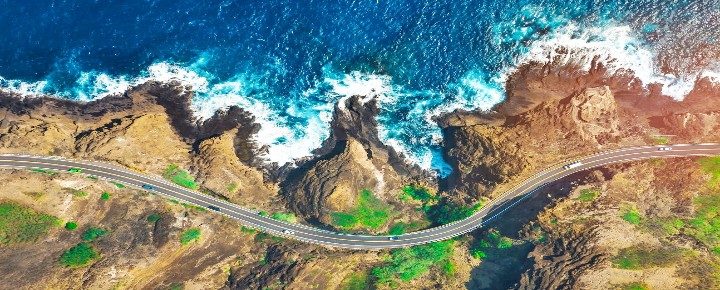

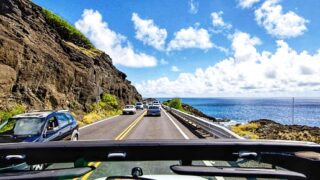
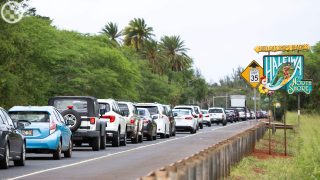
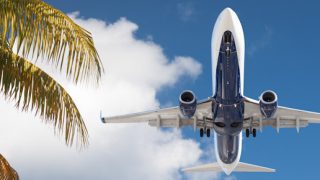
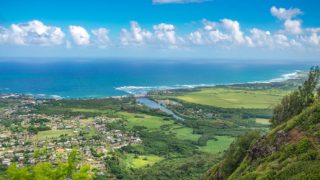
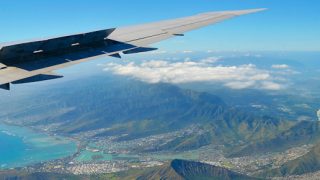
Aloha!
I would like to subscribe to your page, but it is not allowing me.
Any suggestions?
Thank you!
Hi Melissa.
Thanks for letting us know. We’re checking on it now, and you should be able to subscribe shortly.
Aloha.
I successfully subscribed now, Thank you!
Melissa
I moved to Maui 7 months ago. No one here uses turn signals. Never seen anything like it. It’s like they are allergic to them. Also, so many drive super slow in left lane causing massive backups and refuse to get over. Terrible driving ovetlal and I lived in Southern Cali cor years and thought I’d seen it all.
Driving on the big island has turned into a nightmare since thousands of tourists moved here. In 10 years I hardly ever saw road rage. It is now a daily, even multiple occurances a day. They go 15 miles under speed limit and when I go to pass, they speed up and 2 times tried to run me off other side. They don’t know how to drive our curvy hwys and are constantly going off the side. I moved from the mainland to get away from the traffic and road rage…in two years it has taken over our beautiful big island. It is the main topic locals talk about. An accident on Hwy 11 will shut it down for hours. We used to it happening a couple times a year. Now it’s regular. Not the big island I moved to. We no have infrastructure to handle all this traff
Driving on Maui problems are usually result of large city
drivers from certain parts of the Mainland, sorry l will not name
names.
I’m also seeing a lot of comments about “You’ll get there eventually”, but when you work down-island because all the jobs cram there, but work up-island and have children to pick up by 5:30PM, and still have to do homework, serve dinner, etc., then get to work the next morning after dropping the kids off to school by 8AM, that attitude isn’t really an option. Not meaning being inconsiderate on the road is right, but being inconsiderate can really mess someone else’s entire family’s day up.
We were just there for Christmas.
Cannot comment on congestion.
However, the paved roads are “Ace” compared to Vancouver BC. Might as well be driving on a hard compacted logging road.
Q: Anyone heard of any improvement between Lihue and Ka’paa??? The road beyond the airport is terribly congested – all the time. Just asking???
I’ve lived in Hawai’i for 10 years. The problem with most things here, including driving, stems from more of a social issue. People here generally lack self-awareness and are rude, compared to anywhere else I’ve been. I really notice it every time I visit any other state, country, or territory. There’s the whole reputation for throwing shakas and having some strong communal sense of being in things together, including traffic, which sure, does exist for a few people, but the reputation is overall undeserved. People throw shakas after cutting others off when failing to yield before known merge-lanes come, most people don’t use turn signals because turn signals seem to just signal other drivers to speed up and not let anyone over, etc.
I disagree. Sure, it is annoying because people seem to have a near-religious aversion to using their turn signals, and maybe the attitude toward traffic rules in general is a little lax, like most things here, which is part of the culture, but it is very rare that I see anything like road rage or even rudeness on the roads. Yes, the guy in the lifted Tacoma is probably going to break the alternating merge rule when he gets to it, but you know he’s going to so go ahead and let him. Any time I see bad driving it is far more likely to be someone with bad driving habits than someone being a jerk. YMMV.
10 recommendations for visitors. ?!?!
I have one for the locals:
Quit voting in the same corrupt politicians that give you the worst roads, schools taxes, house prices, property crime, business environment and more.
Hawaii has had one party rule now for close to 70 years and it shows.
Mexico has better roads and traffic than Hawaii.
That reminds me– what happened to the monorail to nowhere? Talk about the Hawaiian people being taken for a ride. Millions of dollars over budget. Did it ever get completed?
Any day now…any day…just a little longer…the end is in sight…it’ll be soon…
Thank you for your response, Frank. It made me chuckle. I haven’t been able to be in HI in a few years. I remember the rail construction getting to Pearl City +, and then heard about the purchase of 1 or 2 trains. So if no one thought of the logistics (horrible) of actually bringing it into Honolulu, where everyone works, it’s just a billion dollar park and ride/shuttle to a bus stop?
15 billion I think.
We left the Westin in Ka’anapali at 10:30 this morning on our way to Kihei. We stopped for about 30 minutes at Leoda’s for pie (amazing!!) and we are still not in Kihei – it’s 2pm. This is ridiculous. We heard that a dump truck flipped over somewhere ahead. Who knows. People are missing flights. Got out of the car (this is standstill traffic) and chatted with someone who left three hours ahead for their flight at 3pm and they will miss it now. Plus they’re running out of gas. Taking this long to clear an accident is not ok.
Have you ever cleared an accident involving a flipped over dump truck and spilled blood? It’s harder than it looks Glenna.
We were on O’ahu (staying in the Manoa Valley area) for a little over a week last October. Timed our driving to (mostly) avoid rush hour. Drove mostly around Honolulu but also to Kaneohe and Waimanalo. Driving seemed fine to us; certainly no worse than in Sacramento (where we live). You just can’t be in a hurry.
Aloha Guys – Just wanted to say mahalo for another informative article. I especially appreciate the advice to avoid driving during commute hours. I’m pretty sure the Locals will appreciate it also, and maybe, if traffic improves enough, they’ll welcome visitors once again. Be well. Aloha!
Hi Debbie.
Thanks. Great to hear from you.
Aloha.
After moving here, four years ago, the article talks about the poor condition of roads, traffic, things like that, but what is missed is just the way people drive. We live on the big island. We have a really long section of road south of Kona, where the speed limit is anywhere from 35 to 45 miles an hour. There’s a lot of people that will speed in the sections, they will pass people on the double yellow line, they will drive, 25 miles an hour with 19 cars behind them and refused to pull over. Or they will stop in the middle of the road to let someone make a left-hand turn across traffic, knowing they have 10 or 12 cars behind them. I can appreciate the courtesy and the Aloha but really? You’ve got a dozen people behind you, just keep going
Absolutely understand what you’re saying. We lived on the windward side of Oahu, on Kam Hwy between Punaluu and Hauula. Heavily traveled road. Tourists and locals trying to get to work. Between Kaneohe and North Shore, no other road to get home, or anywhere. If there was an accident or flooding, we were literally stranded. If you were stuck behind tourists going 20mph, there was little chance of getting a lull in traffic or straightaway to pass. The locals have no fear, of course. Patience is the key. You will get there. Eventually. But even with minor traffic problems, I wouldn’t have traded my time there for the world. Paradise is being able to throw a stone from your house to the ocean. And having your morning coffee on the beach. Aloha.
I think the biggest thing you’re missing, at least for Maui is the amount of accidents. I’ve never seen more reckless, careless, cavalier drivers then anywhere in the states or the World I’ve traveled. Red lights and stop signs are optional, yellow means green, and people have -Zero- clue how to merge, right of way or not pulling out on a red light turn in front of oncoming green light drivers. It’s the craziest thing I’ve seen. So yeah, get your head out of the clouds, pay attention, drive safe and be respectful. Aloha is a two way street, not selection when you want it.
I find speeding drivers are mostly locals unless rental agencies are renting out beat up trucks and cars. For the most part I use cruise control and set it for the road’s speed limit. It is without fail some pick up truck will blast past me in no passing zones where it’s really not safe to be driving in excess of the limit. Currently visiting on Big Island and I have to say I do love the reflective markers in the roads especially in the rain at night. Wish more states would use it.
I have to agree with Rich T, on the conditions of the roads (not so much on attitude, it’s everywhere now). If the mayor had to drive around the island once a week, hopefully he would see how bad the roads are. It not only speaks to the tourism aspect but locals have to drive on these roads also. Putting their lives and their vehicles in jeopardy daily. Safe pullouts for people to get out of the way with good signage and a new paving program would go along way,plus put money back into the local economy (if we use local business ).
Traffic and congestion planning in HI is non-existent. On the Big Island the new Saddle Rd. is a joke. To build a major trans-island highway that goes from 2 to 3 to 4 lanes, starts and ends in nowhere is loco. Why couldn’t HI apply for Interstate highway funds to build it? Are they only reserved for Oahu? But my biggest beef about HI drivers on the Big Island and probably every other island but Oahu, is the passive aggressive driving practiced by many locals. Since rental cars are easily identified as they are the shiniest and newest cars on the road, many drivers will harass them if they drive too slow. Once I followed from a distance two cars going down H11 from Volcano. The local tailgated the tourist for miles almost rear-ending him.
Yes, the driving on HI roads is getting worse. Particularly with tourism up. But, the situation on some of the most problem roads could often be improved by Widening those two-lane roads! A prime example, as mentioned by BoH, is the road to Kaanapali from Hwy 30/380 intersection to Lahaina. This is a Major tourist/service worker route to the island’s tourist center. Why is it still tw0-lane??? Yes, getting around McGregor Pt. is an issue, but what about the rest of the road? There’s plenty of room to widen it, but all they do is repave it. How does that improve traffic flow for anyone? Where are ‘all those tax dollars at work’? Remodeling some county offices in Kahului?
I live in California and have driven in Hawaii and the northeast and even England. As for gas, there have been times I’ve seen higher prices here than in Princeville. That being said, the northeast was the worst hands down (New York area mostly). A friend of mine thought an airport shuttle bus driver was going to kill him and his family on a visit there one time.
We live in California where gas prices are absurd, so Hawaii’s just seemed like a regular Tuesday. The road from the airport in Maui to Kaanapali takes awhile, but otherwise, we’ve found it to be relaxing to drive on the islands. I guess it’s all about perspective. California should have been dead last.
I don’t think driving in Hawaii is much different than any other tourist destination. I usually stay away from the most touristy locations and prefer to be off of the main resort or hotel areas. Definitely need to just relax and live on aloha time and enjoy the journey not rush to get to a destination. I have to agree that some roads near state parks have little pavement intact and why are there no upkeep is beyond understanding with all of the visitor fees and tourism taxes. There definitely are some congested areas that some could be handled with a few roundabouts to eliminate some of the lights and have a more consistent flow. Road infrastructure seems to be not part of any master plan in Hawaii.
I must take issue with the survey as others have done. Yes, gas prices are high and skew the survey, and rush hour traffic is a nightmare….it can easily take 1 1/2 hours to get from Lihue airport to Poipu, which normally is a 25-30 minute drive. And the road to Polihali State Park is not for the weak minded, or a sub-compact. Back roads in Kauai are treacherous, especially at night. But have you driven in Boston, where using your turn signal is considered a sign of weakness? Texas roads and drivers are the best but here in Colorado we have terrible roads, probably due to the freezing/thawing of our winters, and discourteous drivers. But every state has its issues.
I live in Washington and roads/drivers here are so much worse than we encounter on The Big Island. Yeah, there is some stop and go during rush hour but one just plans around it. And take alternative routes. I have always thought that the roads, at least on the Big Island, are at least visible at night with great lane markers and reflectors. It has been our observation that pickup trucks (or at least their drivers) like to exceed the speed limit. But, overall, the Big Island has been one of the more pleasant places to drive in the US.
The Dept of transportation Dep. Director Ed Sniffen says he wants to do “simple things” to save lives. I am in Kauai 2-3 months per year and my suggestions to Ed is to spend some of the tens of $millions given to Hawaii in build back better and COVID relief programs and taxes on simple things such as, maintaining bright center and side lines and in road marker reflectors to aid in night time driving. Cut very tall grasses down more regularly on curvy rds to improve sight lines, and fill giant pot holes quicker. Sometimes someone comes out and paints an orange circle around one and it sits for weeks until someone else fills it. Also, check out the center rd markings on the new kukuiula Rd to Kaloa. Was the driver of the lines truck drunk?
Aloha Rob +Jeff. I like Tony S post. With the daily rain, the growth of grass on sides of hwy is hard to keep up with. But the curve areas Are important to keep visibility clear. And I agree with a 5 car behind you,pull over to let people pass by you concept.I live off a 2 lane hwy and the speed limit is 40. A lot of non-locals drive 25 and it’s all uphill into the mountains. The storms here closed the hwy for 2 days cause of mud and rock slides and it was heaven for me with no traffic. Stay well. Hope to be back soon. Mahalo for your work!!!
Not evan close to the worst drivers. Sure the locals drive a little fast but they are by far the most courteous drivers I’ve ever seen.
As far as gas prices go, I live in a state with many refineries and still pay more at the pump then I do when I’m on Maui.
Ah, yes, the beloved Kapa’a crawl. We have been coming to Kauai, specifically to the Kapa’a area, annually for close to 15 years. We have adopted simple driving rules: relax, you will get there when you get there; let people merge and make left turns; and liberally use the shaka. We are on Kauai time, after all.
I never found driving in HI on Oahu bad at all. It’s an island, how lost can you get? Despite sometimes low visibility, most secondary roads along the coast have reflectors in the pavement. I had no problems at night. You have to remember to stay off H1 at rush hour. Nimitz/Ala Moana not so bad. And remember, pedestrians have right of way at all crosswalks, even if there isn’t a light. Try FL driving if you want nightmares.
We took an island break when the islands opened up after the lockdown. We bought an RV and traveled to visit family on the mainland. During that time we visited 38 states in 15 months. We live on Maui and have frequented Oahu and Kauai and I am sorry but they have no idea what they are talking about. There are so many other states that are worse.
Yes we have traffic too, but just as you do on the mainland you avoid of you can. California roads are horrible. Drivers in the North East were just rude and unsafe. Texas had the nicest drivers, especially while pulling a big RV. I could keep going but it looks like “WalletHub” used stats and didn’t actually check out on ground level.
And you didn’t mention Albuquerque??
90 mph+ on the Freeways, 60-70 in 45 mph zone, 40 mph through residential areas, constant Redlight runners some actually stop then drive through the redlight cuz it’s not changing fast enough, illegal U turns, magic finger signs if you confront them OR they’ll just SHhoot you! Non use of that little lever on the left side of the steering column, cutting people off to cross multiple lanes agh! Could go on and on Having been a professional driver, (ambulance and large Trucks) it used to tweak me, Dr. daughter said “Welcome to New Mexico, learn to let it go, these jerks will shoot you cuz 90+ people are armed legally, no need for permit here for loaded guns in your car concealed.”
I have to agree, the last 2 times I went to different islands there has been a accident, One on Kona with a moped driver and the last time in Kauai when someone from the island ran into the back of me going around 40 while me and my 2 grandchildren were at a stop light. Still recovering.
I think it may be best to call Uber from now on.
I read the fine print on the methodology of the Wallet Hub “study.“ It’s a deeply flawed “junk” study. The reason for this is that it individually weighs over 30 variables, and the one variable, the only one, that was given triple weight was the cost of fuel. That’s absurd. It’s no wonder why Hawaii came in last because – we all know that Hawaii has the highest fuel costs. Had fuel costs been weighed equally along with the other variables at only “full” weight, HI would have ranked much much better. Places like Houston, Texas and the entire Seattle area, which are hellscapes for driving due to absolute gridlock and congestion, are really the places to avoid driving.